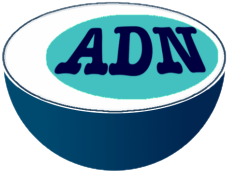Orateur
Summary
Hfq is a bacterial pleiotropic regulator that mediates several aspects of nucleic acids metabolism. Our recent results show that E. coli Hfq changes the mechanical properties of the double helix to compact DNA into a condensed form, its mechanism being mainly based on protein-mediated bridging of DNA segments [1].
Structurally, the E. coli Hfq is organized into two domains. An N-terminal domain, that assembles into a typical toroidal hexameric ring. A C-terminal flexible domain, that encompasses about one-third of the protein and is predicted as intrinsically disordered. We recently demonstrated that this region has the intrinsic property to self-assemble into long amyloid-like fibrillar structures [2]. The mechanisms of Hfq-CTR self-assembly and the effect of this self-assembly on DNA compaction will be presented herein.
Compaction repercussions are particularly important as they usually occur in promoters, and thus influence the transcription start and efficiency. Our results thus shed a new light on a plausible central role of Hfq in DNA transactions in general.
[1] Jiang K, Zhang C, Guttula D, et al. Effects of Hfq on the conformation and compaction of DNA. Nucleic Acids Research. 2015;43(8):4332-4341. doi:10.1093/nar/gkv268.
[2] Fortas E, Piccirilli F, Malabirade A, et al. New insight into the structure and function of Hfq C-terminus. Bioscience Reports. 2015;35(2):e00190. doi:10.1042/BSR20140128.

